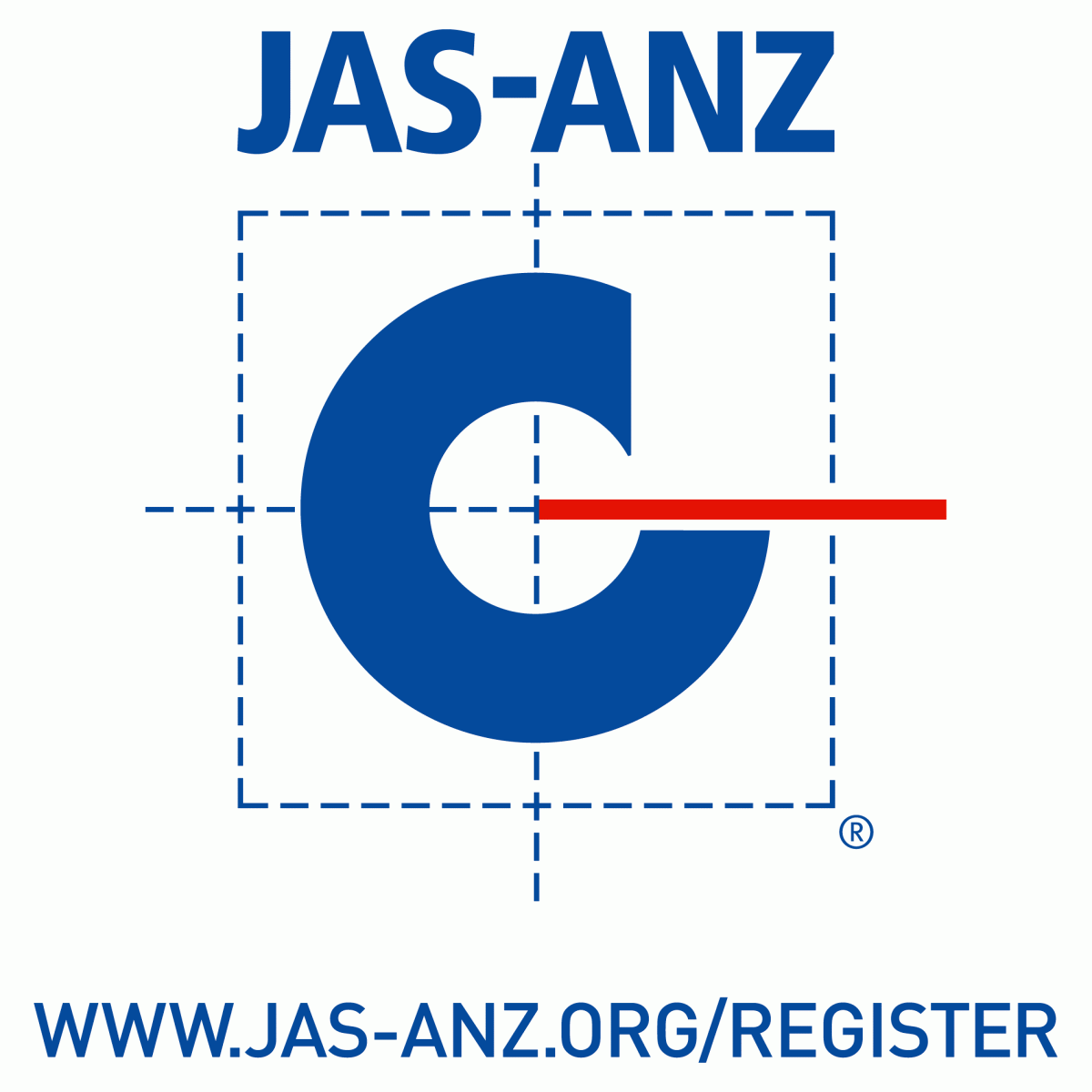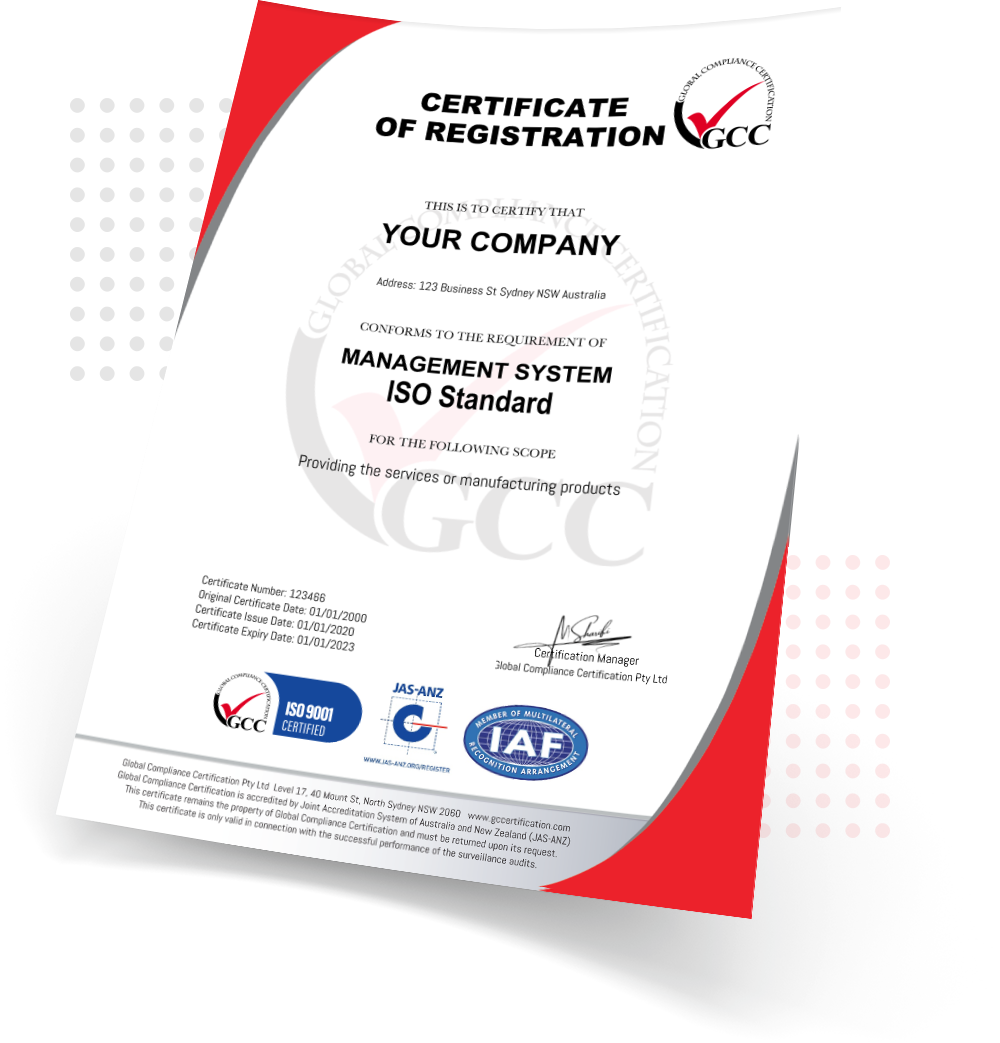
ISO 27001 Information Security Management System
ISO 27001 helps organization to manage assets such as financial information, intellectual property, employee details and other important information.

About ISO 27001 Information Security Management System
ISO 27001, also known as ISO/IEC 27001, is an internationally recognised structured methodology dedicated to information security and its related risk management processes.
It defines the requirements for an Information Security Management System (ISMS) and is a joint publication from the International Organisation for Standardization (ISO) and the International Electrotechnical Commission (IEC).
The management of data and information in your organisation is critical to remain compliant with the regulatory bodies in your industry, and ensure that you are taking your responsibility as custodians of that data seriously. This has a huge impact on the confidence and trust that your customers, partners, and the industry as a whole have in your business.
Note: The new version of ISO 27001 has been published in October 2022. Review the changes of ISO 27001:2022 here.
GCC has completed the JAS ANZ transition requirements and is pleased to offer accredited certificates for ISO 27001:2022
For clients currently certified to ISO 27001:2013, the transition guideline to the 2022 version of the standard can be accessed here.
Quick Quote
Fill out the form below to find out more

Focus of the ISO 27001
- Define a security policy to manage
- Confirm the scope of your ISMS to manage that policy
- Perform a risk assessment that analyses your current systems and processes
- Determine how to manage the risks you identify during your assessment
- Create controls designed to mitigate the identified risks, and implement them
- Publish applicability criteria to ensure that the controls are correctly used
Benefits of ISO 27001 Certification
- Mitigates your risk of cyber attacks by ensuring you have effective security systems in place
- Ensures the efficacy of risk management systems
- Effective data protection instills greater confidence from stakeholders
- Minimises opportunities of non-compliance or with regulatory bodies or laws
- Reduces negative financial impacts from information system failures
Certification Process
Certification involves GCC assessing your organisation in order to ascertain that management systems meet the requirements of one or more recognised standards. Becoming certified to a nationally or internationally recognised standard is of great benefit to an organization. It improves overall performance, builds confidence within stakeholder groups and broadens the scope of new opportunity.
Application/ Contract
- Application for certification by client
- GCC will review and provide certification proposal
- Client accepts the agreement and return to GCC
- Audit dates will be booked
- GCC conducts Gap Analysis (optional)
Certification Audit/ Transfer
- Stage 1 Audit, The Audit team will assess documentation and readiness of management system for Stage 2 Audit
- Stage 2, Certification Audit, Audit team will assess implementation of system and will verify any issues outstanding from the Stage 1 Audit.
- Organisation will be recommended for Certification after review and positive decision by the independent GCC certification Authority,
- A Certificate will be issued
Maintaining certification
Surveillance Audits
Each issued certificate has a three-year life period. Upon certification, an audit program will be created for regular audits over the three-year period. These audits confirm company’s on-going compliance with specified requirements of the standard. At least one surveillance audit per year is required.
Read our policy for use of Certification Marks
Re-Certification
Re-Certification
The certification expires within 3 years and a re-certification Audit will be conducted prior to the expiry date to ensure that Management System is maintained.
Frequently Asked Questions
ISO 27001 is the international standard for information security systems, i.e. systems designed to secure IT networks and the data they hold. Recognised across the globe, it was developed by ISO in close cooperation with the International Electrotechnical Commission (IEC). Although it’s not obligatory to obtain ISO 27001 certification in Australia, or any other country, it does provide a useful framework that makes the job of implementing effective IT security protocols easier to achieve. The ISO 27001 guidelines set out a list of requirements for an information security management system (ISMS), which need to be met by companies that wish to be certified.
The ISO 27001 standard includes a comprehensive set of requirements for an ISMS, including information security policies, human resources security, asset management and access control. It also covers topics and technologies such as cryptography, physical security, environmental security, relationships with suppliers, incident management, communications security and operational security. In short, if it has an impact on the security of the data stored in your IT system, it will be covered by this certification. It does, of course, cover the requirements for compliance with international data security regulations and the latest industry best practices as well.
An ISMS is an information security management system. But what exactly does this mean and what is the purpose of an ISMS? An ISMS describes your company’s information security and privacy procedures and processes. It is intended to demonstrate the measures you have taken to ensure that the information stored in your systems is protected from outside threats. It also covers the plans you have made to deal with any security breaches if they should occur. Whether or not your organisation wishes to achieve ISO 27001 certification, it’s important to have an ISMS in place that clearly states the steps you have taken to secure your infrastructure and the sensitive data it contains.
The decision to establish and implement an ISMS should be made by top management; however, security responsibilities lie with everyone in the organisations. Management, personnel and even contractors are a part of the ISMS and may present a significant risk if not trained well.A common awareness program may be good to start but needs to be followed up with documented policies and procedures with clear responsibilities for protecting data and information. Policies and procedures can facilitate Access to information as well as Integrity and Confidentiality (CIA), can help mitigate the risk of a breach and guide staff in specific situations. Well implemented policies and procedures are an indication of an organisation’s strength on security and may enhance people’s commitment to ISMS.
The confidentiality, integrity and availability of data and information are the focus of ISO 27001. These three are usually threatened by a variety of internal and external threats and the only way we can protect our data and information is a proper risk assessment. Risk management helps us to target our efforts and security measures in the right place at the right time. No organisation has unlimited resources, and need to use resources wisely as per the risk assessment.
Risk assessment is an important element of information security management systems. The methodology used for risk assessment is particularly important to be effective, otherwise it would be hard to identify and evaluate risks an organisation have and difficult to define right and effective security response. Every organisation has its own specific environment, specific structure, business model, and culture, and needs to design and agree on its own specific Risk assessment methodology.
There are a number of mandatory requirements that must be met to achieve ISO 27001 certification, the two most important of which are:
- Defining the Scope of Your ISMS – You need to produce a detailed definition of the information your system is designed to protect
- Risk assessment/treatment methodology – This should identify all potential threats and how you intend to deal with them.
If you would like to obtain ISO 27001 certification in Australia or elsewhere, please get in touch to discuss the certification process with a member of our team. In the meantime, you can check out our code of conduct to get a better idea of how we operate.
The required documents for an ISO 27001 audit will depend on the scope of the audit, the size of the organization, and the specific cyber security risks of the organisation. However, here are some of the key documents that are typically required for an ISO 27001 audit:
Information Security Policy: This is a document that outlines an organization’s overall approach to information security, including its objectives and strategies for managing risks.
Risk Assessment: This document includes the risks identified during the risk assessment process, along with the likelihood and potential impact of each information security risk.
Statement of Applicability (SOA): This document outlines the controls that an organization has selected to implement to manage identified risks.
Information Security Management System (ISMS) Manual: This is a document that provides an overview of an organization’s ISMS and describes the policies, procedures, and processes used to manage information security risks.
Procedures and Work Instructions: These documents describe the specific steps that employees must follow to carry out various information security tasks and processes.
Records: These are documents that provide evidence that an organization has followed its information security policies and procedures, such as logs, reports, and audit trails.
Training Records: These documents demonstrate that employees have received the necessary training and education to carry out their information security responsibilities.
Incident Management Plan: This is a document that outlines the steps an organization will take in the event of a security incident or breach.
Business Continuity Plan: This document outlines the steps an organization will take to ensure that critical business functions can continue in the event of a disruption.
Evidence of Monitoring and Review: This includes documents that demonstrate that an organization is monitoring its ISMS and conducting regular reviews to identify areas for improvement.
It’s important to note that these are just some of the key documents that may be required for an ISO 27001 audit. The specific requirements will depend on the organization, the scope of the audit, and the level of risk involved in practices of organisation.
SOA stands for Statement of Applicability, which is a document that outlines the controls that an organization has selected to implement to manage the risks identified during the risk assessment process.
The SOA is a key component of the ISO 27001 standard, as it helps to demonstrate that an organization has a systematic approach to managing information security risks. The SOA should include a list of all the controls that the organization has selected to implement, along with a justification for each control.
The controls included in the SOA should be selected based on their relevance and effectiveness in managing the risks identified during the risk assessment process. The SOA should also include information on how each control will be implemented, maintained, and monitored to ensure its ongoing effectiveness.
The SOA is an important document for both the organization and the auditor, as it provides a clear overview of the controls that are in place to manage information security risks. The ISO 27001 auditor will review the SOA as part of the audit process to ensure that the controls selected by the organization are appropriate and effective in managing the identified risks.
The decision to buy a ready-made template or hire a consultant to develop an information security management system (ISMS) depends on several factors, including the size of the organization, the complexity of its information systems, the level of expertise within the organization, and the resources available.
Here are some factors to consider:
Time: If an organization has a limited time frame to develop its ISMS, purchasing a ready-made template may be a quicker option than hiring a consultant. However, developing an ISMS can be a time-consuming process, and a consultant can provide the expertise needed to ensure that the system is effective and meets the organization’s specific needs.
Resources: A ready-made template or software may be a more cost-effective option for small organizations with limited resources. However, larger organizations or those with complex information systems may require the expertise of a consultant to develop an ISMS that is tailored to their specific needs.
Expertise: A consultant can bring a level of expertise to the development of an ISMS that may not be available within the organization. An ISO 27001 consultant can also provide guidance on best practices and ensure that the ISMS meets the requirements of the ISO 27001 standard.
Customization: A ready-made template may not fully meet the needs of the organization, and customization may be required. A consultant can help to develop an ISMS that is tailored to the organization’s specific needs and requirements.
In summary, there is no one-size-fits-all answer to whether an organization should buy a ready-made template or hire a consultant to develop its ISMS. Both options have their advantages and disadvantages, and the decision should be based on the specific needs and resources of the organization. It’s important to evaluate both options carefully and choose the one that best fits the organization’s needs.
GCC Training
Empower your team with our self-paced efficient training.








